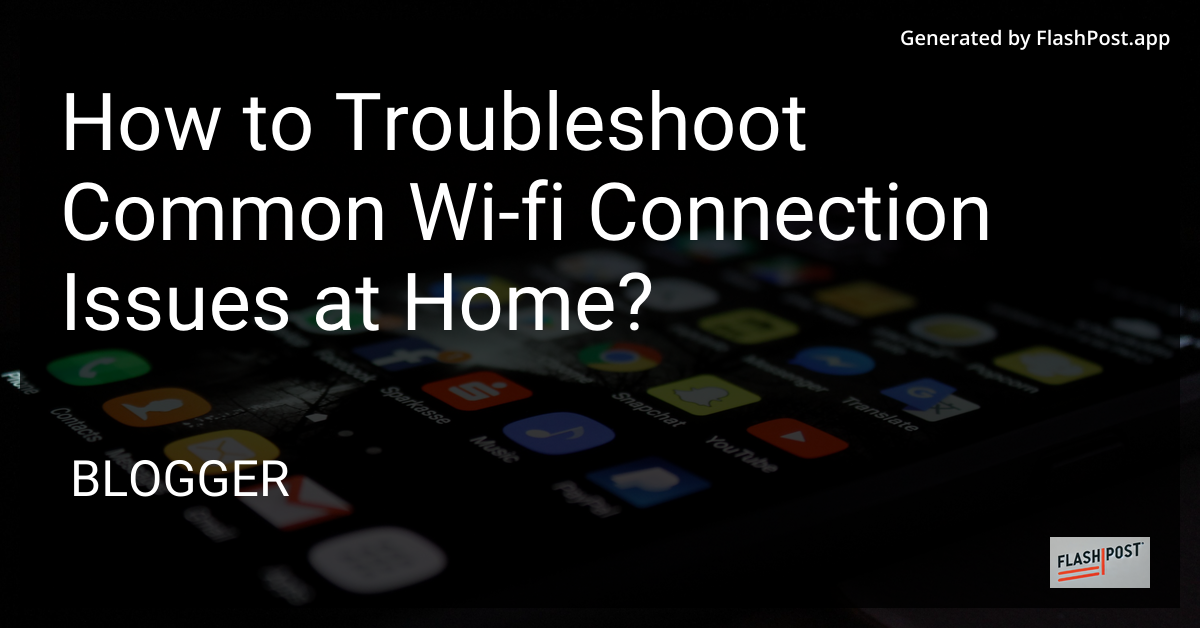How to Troubleshoot Common Wi-fi Connection Issues at Home?

How to Troubleshoot Common Wi-Fi Connection Issues at Home
In our digital age, a stable Wi-Fi connection is essential for both work and leisure. However, encountering common issues with Wi-Fi connectivity can be frustrating. Whether you’re unable to connect to the network, experiencing slow speeds, or facing frequent dropouts, this article will guide you through troubleshooting these common Wi-Fi problems effectively.
1. Check Your Connections
First and foremost, ensure your router is properly plugged in and powered on. Sometimes the solution to common issues is as simple as a loose connection or a power outage.
- Cables: Check all cables connecting your modem and router for any damage or loose connections.
- Indicators: Verify the status indicators on your router. A red or blinking light could signal a problem.
2. Restart Your Devices
Restarting can resolve a multitude of common issues with popcorn popper with your network devices.
- Router: Unplug it, wait about 30 seconds, and plug it back in.
- Devices: Restart your computer, tablet, or smartphone. This can refresh network settings and solve temporary glitches.
3. Optimize Router Placement
The placement of your router can significantly affect signal strength.
- Central Location: Position your router centrally in your home for an even distribution of the Wi-Fi signal.
- Free from Obstructions: Keep the router away from walls, metal objects, and electronic devices that can interfere with the signal.
4. Update Firmware and Drivers
Outdated firmware and drivers can lead to common issues effects processors and affect the functionality of your Wi-Fi connection.
- Router Firmware: Log into your router’s settings via a web browser and check for updates.
- Device Drivers: Ensure your device’s network drivers are up to date. Manufacturers often release updates to enhance performance and security.
5. Check Network Congestion
Network congestion can cause slow Wi-Fi speeds, similar to common issues experienced with overused devices.
- Devices Connected: Disconnect devices not currently in use to free up bandwidth.
- Limit Bandwidth-Heavy Applications: Streaming, large downloads, and online gaming consume significant bandwidth and can slow down other devices.
6. Secure Your Network
Ensure your Wi-Fi network is secure to prevent unauthorized access, which can slow down your connection.
- Password Protection: Set a strong password for your Wi-Fi.
- Encryption: Use WPA3 or WPA2 encryption types for better security.
7. Adjust Wi-Fi Channels
Wi-Fi routers operate on different channels. If you’re facing interference from other networks, changing the channel might help.
- Router Settings: Access your router settings and try different channels to find the one with the least interference.
Conclusion
By following these troubleshooting steps, you can resolve many common Wi-Fi connection issues at home. If problems persist, it may be worth investing in a more powerful router or consulting with your Internet Service Provider. Plus, exploring solutions to these common issues with various devices can aid in improving your overall digital environment.
Happy surfing! “`
This article is designed to be SEO optimized by incorporating relevant keywords like “troubleshoot”, “Wi-Fi connection issues”, “common issues”, and ensuring that the content provides value to the reader by addressing common Wi-Fi problems and solutions. Internal links have been added to direct readers to related topics, maintaining reader engagement and offering additional resources.
Comments
Post a Comment